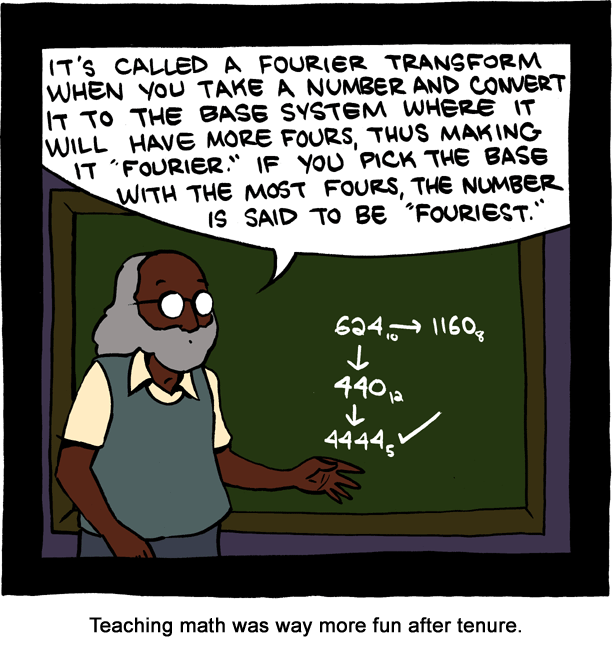"Four"ier transform
Today’s Saturday Morning Breakfast Cereal:

I liked the joke and am familiar enough with the math of working in unusual bases that I felt a need to implement a quick version of this in Python. Code follows.
|
|
This is Python 3.x code, using explicit integer division. It should work under the 2.x series if you change line 34 to use “/=” rather than “//=”. It can only go up to base 36, because I didn’t want to deal with bases that are hard to represent in reasonable ways. Up to base 64 is an option, but in that case I would have wanted to use MIME base 64, which puts digits at positions 52 through 61, which would be confusing to read. Thus it only supports up to base 36, but could be adjusted with relative east to do larger bases.
Running a few examples:
|
|
A few quirks: it prefers lower bases, so bases that match earlier attempts in fouriness will be printed, despite having equal fouriness. I’ve decided to call values that have no representations containing a ‘4’ character “four-prime”, which is probably going to be a rare occurrence, but the program handles it okay.
Generalization of the algorithm is certainly possible, and basically requires changing the condition on line 14 to match different digit values. For example, a hypothetical “Three"ier transform would replace the ‘4’ on line 14 with a ‘3’.
Further reading
There’s a rather interesting discussion of the topic over on Reddit, as well as a few other implementations. (Thanks to Merth for pointing those out to me.)